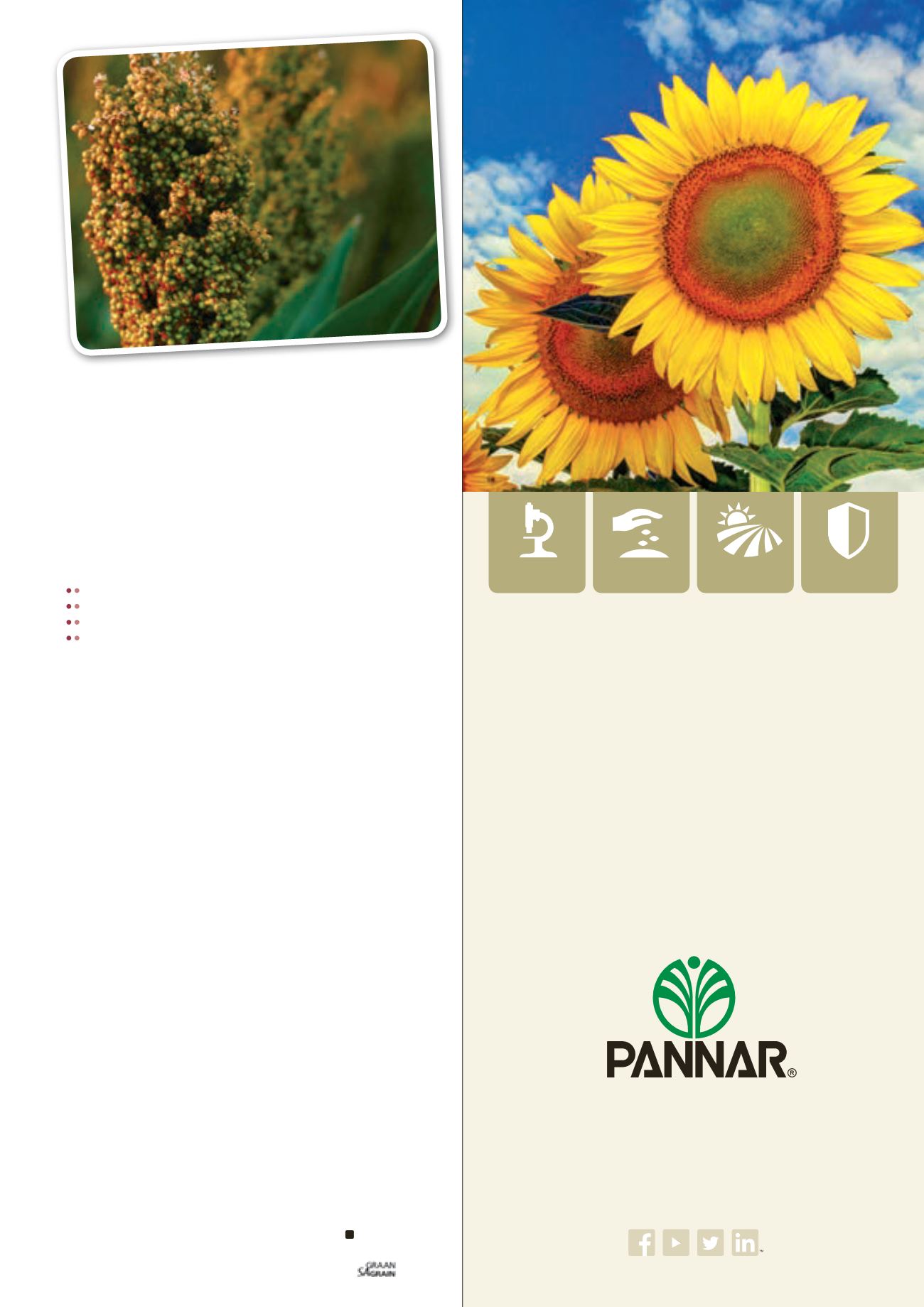

PANNAR sonneblombasters is bekend vir stabiele
prestasie en goeie risikobestuur. Die pakket sluit ’n
volledige reeks basters met die CLEARFIELD
®
geen
asook basters met die CLEARFIELD
®
PLUS geen in.
Boere kan met groot gemoedsrus en vertroue
PANNAR se sonneblomreeks aanplant met die wete
dat die beste tegnologie in hierdie basters opgesluit lê.
®CLEARFIELD
®
en CLEARFIELD
®
PLUS is die geregistreerde handelsmerke van BASF.
Skoonheid en
verstand, vir
resultate op die land.
2015/SUN/A/11
® Geregistreerde handelsmerke van PANNAR BPK, © 2014 PANNAR BPK
Saam boer ons
vir die toekoms
™
www.pannar.com infoserve@pannar.co.zaULTRAMODERNE
NAVORSING
GEWASVOORSORG
PRESISIE-
BEPLANNING
GEWASBESKERMINGS-
BESTUURSPRAKTYKE
51
Diversifying export markets:
Where are new potential markets
for sorghum exports?
Sorghum potential export markets are identified through the
growth share matrix (see
Figure 1
). The countries are grouped and
classified according to their growth in import demand and their
relative share of global imports.
Figure 1 defines the category under which each country’s market
falls by taking the top 50 global sorghum importers. These can be
considered as:
High growth – high share category
High growth – low share category
Low growth – high share category
Low growth – low share category
This analysis mainly takes into account the trade flows without
emphasis on the non-tariff barriers such as genetically modified
organism (GMO) restrictions. The high growth market represents
a country whose growth in imports is greater than the global
average growth of 17,6%. The high share market represents a
country whose share of global imports exceeds the share of
South Africa's exports in the world market, which is 1,4%.
The growth share matrix
The outcome of the analysis is presented in
Figure 2
. Within the
continent, Cameroon, Sudan and Ethiopia are the only countries
that show the greatest potential for an export expansion strategy.
Sudan and Ethiopia are the strongest options because they have sig-
nificantly lower tariff barriers, compared to Cameroon.
Globally, Japan and Mexico are the large markets, with zero-rated
tariffs for South African sorghum exports. However, there are still
major concerns regarding the competitiveness of South Africa in
these respective markets, more specifically the supply requirements.
Europe also presents several options for South Africa (Figure 2).
Nevertheless, the same concerns of competitiveness and supply
requirements remain. South Africa’s sorghum enters Europe at a
modest duty of 1,6% under the Trade and Development Coopera-
tion Agreement (TDCA). Moreover, Israel, Peru, the United States
of America and New Zealand are duty free markets and hence also
need to be further reviewed.
To conclude
The focus for export expansion should be more on the Far East,
specifically Japan, as well as in Europe, but also not ignoring the
African markets such as Sudan and Ethiopia. However, there might
be some non-tariff barriers in these markets.
There is a need for a non-tariff barrier study to look at the considered
markets through a country-by-country approach.
SA Grain/
Sasol Chemicals (Fertiliser) photo competition

















